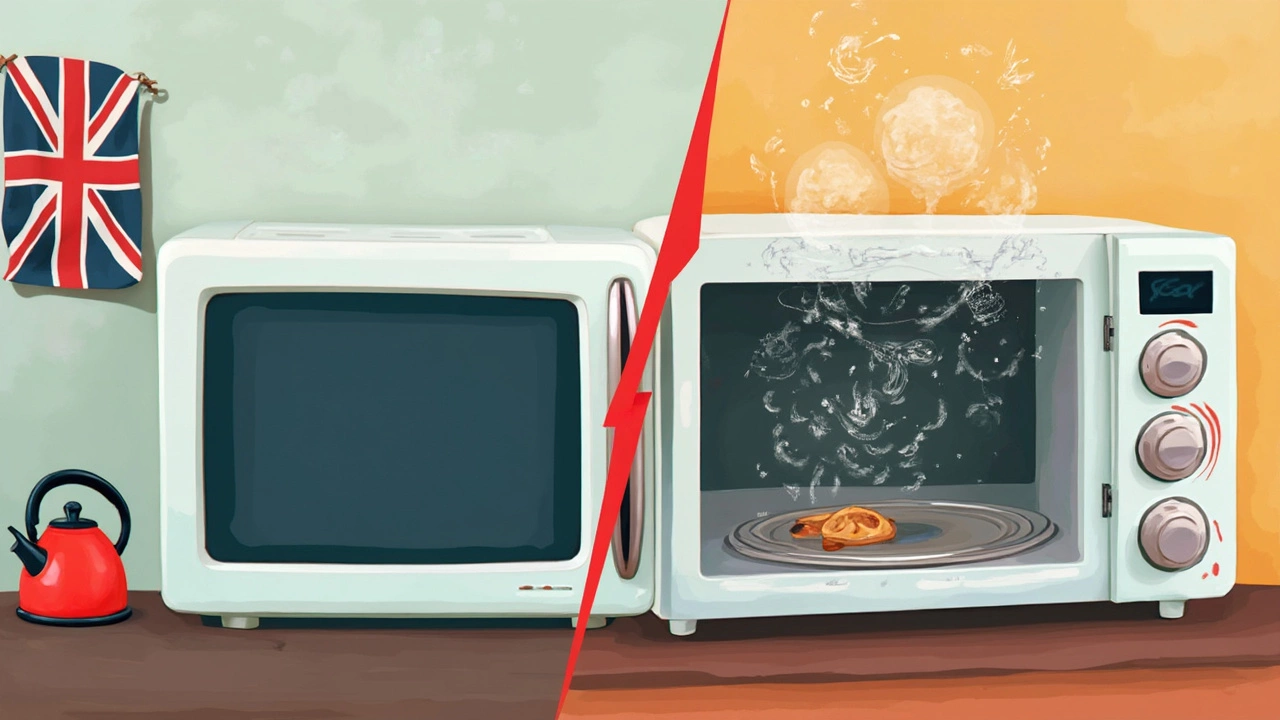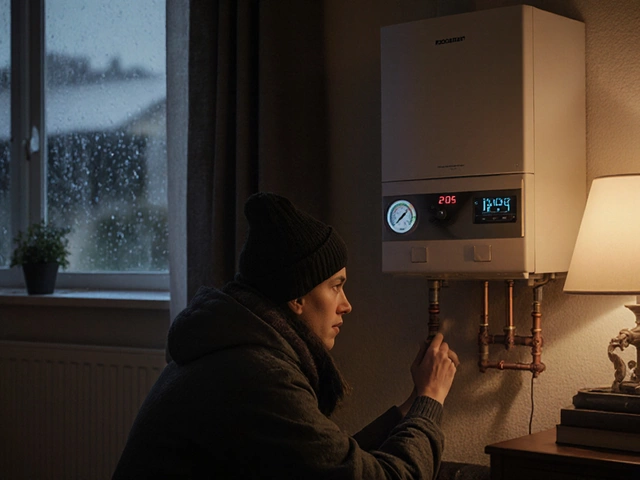Splatters on the ceiling, a burnt popcorn smell hanging in the air, and that mysterious half-second hiccup before your food starts spinning. If you cook, reheat, or even just melt butter half as often as my son Tristan does his instant noodles, then you know: the microwave really is the workhorse of the kitchen. But here's the deal—a microwave isn’t immortal, and ignoring the subtle (and very not-so-subtle) hints that it’s on its way out can lead to cold coffee and, if you believe some wild stories online, mini kitchen light shows. But how long is a microwave actually supposed to last? And more importantly—what can you do to make sure yours doesn’t quit on you in the middle of a late-night snack attack?
Microwave Lifespan: What the Numbers Really Say
The straightforward answer you usually see is this: microwaves tend to last about 7 to 10 years. That’s not a made-up number—almost every big-name brand, from Panasonic to GE, designs domestic models with this window in mind. The U.S. Bureau of Labor Statistics pegs the “average” microwave lifespan right around 9 years for typical home use. Commercial microwaves in cafes and break rooms? They clock out even earlier—sometimes just 4 to 5 years. Heavy-handed use, especially like the “15-second pizza reheat” trick my son swears by, can shave off some precious months too.
But—and here's something folks rarely mention—usage habits matter way more than you’d think. If you run your microwave three times a day, every day, it’s not going to last as long as the model in your friend’s guesthouse, which gets used maybe twice a month. Slamming the door, running it empty (it’s tempting when you’re cleaning, but don’t), and never cleaning out the gunk? All these chip away at its working years. At the heart of it all is the magnetron, that little glass-and-metal tube making the microwaves. Once the magnetron goes, you’re usually looking at a replacement—not a repair.
How to Spot When Your Microwave Is Failing
You’d think a microwave would just die one day without warning. But actually, the end is nearly always a slow burn. The food comes out colder or unevenly heated. Maybe it makes a weird clunking noise or smells like burning wire (never a good sign). I once caught my own microwave sparking like it was auditioning for a fireworks show—turned out a bit of foil got left behind in the popcorn bag.
Here are the big red flags to watch for:
- It takes much longer to heat food than before—this usually means the magnetron is fading.
- Buzzing or humming louder than usual—fans or power supply trouble.
- Burnt smell or visible sparks—could mean electrical trouble or just leftover food sparks, but never ignore.
- The door doesn’t fully close or latch—it’s a safety problem, not just an annoyance.
- Smoke—stop everything. Unplug it, and don’t use it again until it’s checked.
- Keypad or display malfunctions. This can sometimes be fixed, but often signals a tired device.
I know the urge to hold on for dear life—especially when the microwave is the only thing standing between you and hangry kids. But if yours is showing these signs and is already in the 7–10 year zone, it might be time to wave goodbye. Repairing a magnetron can sometimes cost almost as much as a new unit. Plus, an old microwave can become a fire risk.

Can You Make Your Microwave Last Longer?
Absolutely. Take it from someone who hates throwing out “perfectly good” appliances: the key is gentle care and routine maintenance. Here are tricks that actually stretch that lifespan closer to (or even past) ten years:
- Keep it clean. Spills and grease that get cooked again and again create hotspots, sparks, and can even damage the interior paint or lining. Wipe it down inside and out with mild soap and water (never spray directly into vents).
- Never run it empty. No food means the waves bounce around with no place to be absorbed, heating and stressing the magnetron.
- Use microwave-safe containers. Metal or foil = sparks. Some plastics can melt and release nasty chemicals. Stick to glass and dedicated microwave-safe plastic.
- Close the door gently. That satisfying slam might feel good but it can bend latches, break seals, and ruin the safety interlocks inside.
- Keep vents clear. Blocked airflow means heat buildup, and that’s how you fry sensitive circuits or the power supply.
- Let it cool between runs. If you’re microwaving several things (popcorn for movie night, in our house), give it a break of at least a minute between uses. That lets the magnetron gently cool down and last longer.
And hey, if your keypad is sticking or lights have gone out, those little fixes (sometimes as simple as a $10 part online) can add a couple extra years easily—if you’re handy. If not, it might not be worth the hassle unless it’s a high-end built-in model.
When and How to Replace Your Microwave
Even the hardest-working microwave will eventually call it quits. Here’s the thing—waiting until total failure isn’t always the best strategy. Modern microwaves have gotten significantly more energy-efficient, meaning a ten-year-old model probably costs you more in electricity than you’d think. Microwave lifespan isn’t just about how long it turns on; it’s about performance and safety.
Here are moments when it really is time to start shopping for a new one:
- The magnetron is dead (not heating)—repairs can top $100, while a new, simple countertop model starts around $60.
- Physical damage to the door or body—breaks in the seal can lead to microwave leakage, which is a real hazard.
- Repeated fuses blowing or tripping breakers—electricals are wearing out, which isn’t safe.
- Your family needs have changed (maybe you need a bigger unit, or one with child lock features—Tristan can attest how easy it is to make a mess at age seven).
Here’s a quick look at what average microwave prices look like in 2025:
| Type | Expected Lifespan (Years) | Price Range (USD) |
|---|---|---|
| Basic Countertop | 7–10 | $60–$150 |
| Mid-Range (Sensor, Grill) | 8–12 | $150–$400 |
| Built-In/Over-Range | 9–12 | $250–$1200 |
| Commercial | 4–7 | $300–$3000 |
If you do upgrade, be sure to recycle the old one—microwaves have electronics and metals that shouldn’t end up in landfills. Call your waste service or check a local electronics store drop-off.

Fun Facts and Trickier Truths About Microwaves
Weird and wonderful: the average American uses a microwave nearly 5 times a week. But few people know the first “home” microwave, the 1946 Radarange, cost over $3,000 (that’s like $45,000 today!) and was the size of a fridge. Fast forward, and now you can buy a compact microwave for less than a pair of sneakers. But don’t confuse cheap with disposable: even low-cost models will easily last 7–8 years with proper care.
Still, not all microwaves are created equal. From inverter technology (more even heating and better control), to pre-programmed sensors, smarter features mean better lifespan—mainly because they prevent that old abuse, like constant overcooking or microwaving dense foods too long. Inverter microwaves, for example, don’t stress the magnetron as much, so they tend to last a bit longer than traditional models.
Another tip I learned the hard way: don’t ignore the “replace your charcoal filter” reminder on over-the-range models. Forgetting can actually lead to a burned-out fan motor, and there goes your microwave’s best friend for clearing up kitchen smells.
If you’re curious, here’s a pro hack: keep your receipts and the serial/model number in your phone’s notes. Most major brands offer 1-year full warranties, and some extend magnetron coverage for 5–10 years. If yours dies early, a quick search could mean a free repair or replacement—something the average owner never claims.
I guess the best summary is this: treat your microwave like a trusted ally. Don’t abuse it, keep it clean, use the right stuff inside, and listen for warning signs. Do that and your microwave could surprise you—maybe even outlast your coffee machine. And if you’re dead set on making it past the big ten-year mark, just remember, sometimes giving in to a newer, safer, more efficient model is the real win after all.


